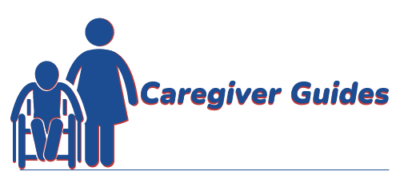
Did you know that as we age, we may lose up to 40% of our muscle mass by the time we reach the age of 80? Doctors and scientists have a name for this muscle loss. They call it sarcopenia. And it occurs more commonly in those folks who don’t exercise. Sarcopenia can lead to an increase in falls and loss of function in those of us who are getting up in age.
However, there’s good news: resistance training (lifting heavy things) can help slow or even reverse muscle loss that comes from sarcopenia. In this blog post we’ll look at the importance of having the elderly and seniors add resistance training to their daily routine to build muscle and stay healthy all along the aging process.
Understanding Sarcopenia and How it Affects Seniors
Sarcopenia is a natural process that occurs as we all get older. We all begin to lose our muscle mass starting around the age of 40. Most have an average loss of 8% of total body muscle mass every decade until they reach the age of 70. After that, the rate we lose our muscle mass accelerates to about 15% per decade (Wow !). This decline is seen most notably in the muscles of the legs, which explains the increasing risk of falls and loss of function.
Why Older Folks Should Lift Weights or Practice Resistance Training
Resistance training, or weight lifting, is the most effective way to prevent the progressive loss of muscle as we get older. This is backed by scientific evidence. In resistance training, you move your body against resistance typically provided by weights, or you could use resistance bands or body weight for that matter. As you continue to exercise, you progressively increase the amount of resistance over time. It’s the best treatment for sarcopenia, and research has shown that regular resistance training in combination with getting enough protein in your diet will slow the loss of muscle and keep you healthier and more independent as you’re aging.
Benefits of Resistance Training for the Elderly
Resistance training will help you improve your overall muscular strength and power when you perform your everyday activities, like doing yard work or the laundry. It will also help you lift and carry your grandchildren. From a mobility standpoint, It can also increase your hip strength to help make balance, walking, and even running a lot easier.
How Resistance Training Works For Seniors
Resistance training stimulates muscle growth factors and activates specific parts of the muscle called “satellite cells” which help to stimulate new muscle growth. Resistance training recruits more nerve fibers and activates them which results in an increase in muscle mass and strength. Weight training actually makes stimulates a greater percentage of your muscle to work and, if you stick with it, makes your muscles grow larger and stronger.
In addition to exercise, seniors need to make sure that they are getting enough protein in their diet to help make muscles grow stronger. Protein is essential to muscle growth, and research suggests that older adults may benefit from a higher recommended daily allowance of protein than what’s recommended for their younger counterparts. The usual recommendation is 0.8 grams per kilogram of body weight per day. Whereas it’s recommended that seniors get 1.0-1.2 grams/Kg of bodyweight. That translates into if you weight 160 lbs., you should be consuming at least 72 grams of protein spread out through the day to increase and maintain muscle growth. As long as it’s okay with your family doctor.
Other Types of Exercise for Seniors
There are other types of exercise that seniors should also add to their routines. Endurance, strength, balance, and flexibility exercises are all important for older adults. Endurance exercises will do a lot to improve heart and lung health as well as that of the whole circulatory system. This will make it easier to keep doing the everyday activities like gardening, house keeping, or fun stuff like dancing.
As we already discovered, strengthening exercises will make you stronger and that makes things like climbing stairs or lifting groceries easier.
Flexibility exercises can improve your range of motion, giving you more freedom of movement. That can make doing things like putting on a sweater or reaching for hard to reach items easier. And, balance exercises can help you avoid falls and make activities like walking on uneven pavement and sidewalks safer.
Getting Seniors Started with Exercise
Starting exercise slowly and finding a partner or support system can make exercise more enjoyable and sustainable. Keep in mind, it doesn’t have to be a gym program. If you’re able to find an activity you enjoy and want to stick with it long-term, this is the best option. Gradual progress can help your body adjust to new changes and minimize any discomfort that may come from doing something new. Remember, exercise will have many benefits, including increased independence and improved quality of life.
In Summary:
Resistance training is the best treatment for sarcopenia, and it’s never too late to start. Incorporating resistance training and other types of exercise into your routine can help slow muscle loss, improve overall health and independence

Bryan Williams
Physical Therapist
is a licensed therapist with near 30 years of professional experience treating a diverse patient population in a multitude of settings. With simple strategies, he educates and empowers his clients with simple strategies to help them move better and with less pain.
